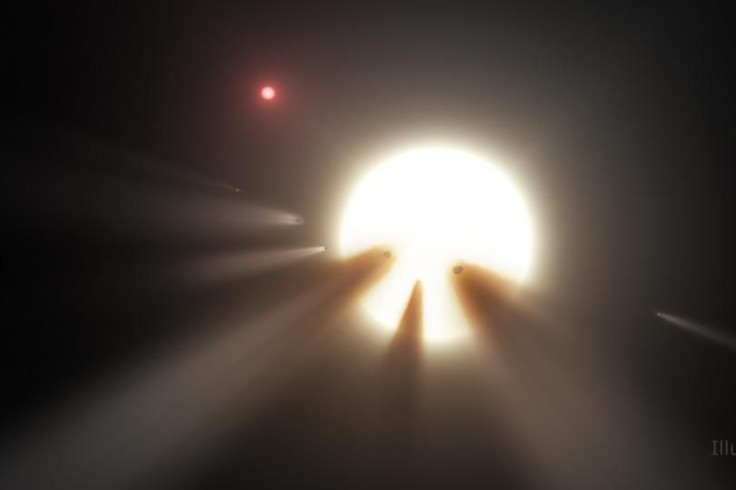‘Alien Megastructure’ Star Update: New Data Fails To Explain Tabby’s Star’s Erratic Dimming

Tabby’s star is not giving up its secrets anytime soon. On Monday, Yale University astronomer Tabetha Boyajian, who lends the mysterious star its informal name, released the first batch of data from her Kickstarter-funded telescopic survey of KIC 8462852.
The long and short of it — the star is currently not showing any fluctuations in its brightness. This means we still do not know anything that can explain the really bizarre behavior it has exhibited in the past.
Tabby’s star shot to fame last fall, when a team of scientists led by Boyajian reported that the star was not behaving as it should. Based on observations conducted using NASA's Kepler Space Telescope between 2009 and 2013, the team witnessed two unusual incidents, in 2011 and 2013, when the star's light dimmed in dramatic, never-before-seen ways.
This dimming indicated that something had passed in front of the star — located between the constellations, Cygnus and Lyra. At the time, a swarm of comets was proposed as the most likely explanation.
A month later, in October, Jason Wright, an astronomer from Penn State University, put forth the idea that the swarm of objects around the star is “something you would expect an alien civilization to build.”
In other words, he suggested that the swarm may be an “alien megastructure,” or a giant Dyson sphere, built by a technologically advanced species to harness the star’s energy.
Unfortunately, two subsequent independent searches, especially tailored to detect alien radio signals and laser pulses, drew a blank, and, earlier this year, a study based on analysis of photographic plates of the sky dating back to the late 19th century argued that even the comet swarm idea, which was the best of the remaining proposals, cannot explain the star’s erratic dimming — although the study’s findings were widely disputed.
The mystery deepened further after Caltech astronomer Ben Montet and Joshua Simon of the Carnegie Institute detailed their analysis of photometric data of the star gathered by the Kepler space telescope in a new, yet to be peer-reviewed paper released earlier this month.
Their findings showed that the star was definitely dimming at a rate that defies explanation over the four years Kepler monitored it. For instance, in the first 1,000 days of Kepler’s observations, the star’s luminosity dipped by roughly 3.4 percent per year, before dropping dramatically by 2.5 percent in a span of just 200 days — something that suggests that the long-term dimming hypothesis may very well be true.
“Some people have sort of facetiously offered that perhaps this is a Dyson sphere under construction: You're seeing lots of material getting built,” Wright told Space.com. “In just 100 years, they've blotted out 20 percent of the starlight. That seems kind of fast to me — but, you know, aliens, right?”
With the data available so far, it’s anyone’s guess.
© Copyright IBTimes 2025. All rights reserved.






















